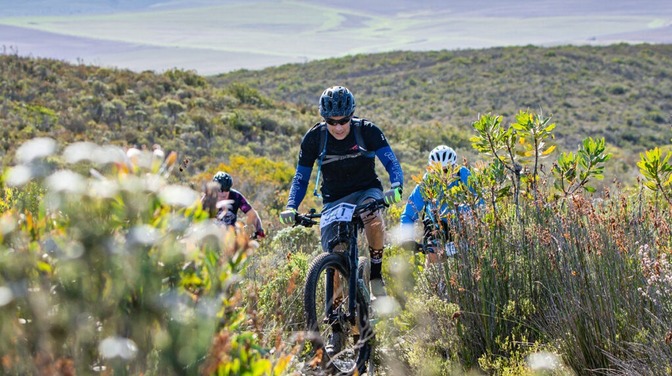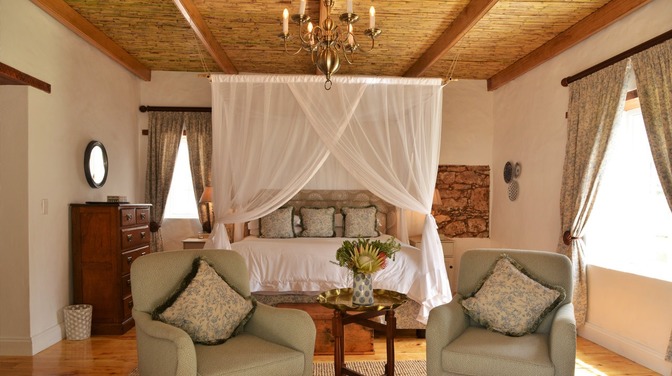Select a category
The Oldest Village in the Strandveld
The historic mission settlement of Elim, situated between Gansbaai and Bredasdorp, has in recent years also become the portal to the newest and southernmost wine route on the African continent - the Elim Wine Ward.
Richly steeped in history, this quaint oldest village in the Strandveld boasts an extraordinary array of treasures and the rarest fynbos species in the world. Here you will find the beautiful Moravian Mission Church, the traditional Elim Brass Band and the church clock that dates back some 240 years and nonetheless still keeps good time in a village where time seems to stand still.
Elim was founded by Moravian missionaries in 1824 and was largely inhabited by members of the Moravian Church. Aptly named after the biblical Elim where the Israelites set up camp next to "twelve wells of water, and threescore and ten palm trees", Elim is still a paradise of lush green fruit trees, lawns and flowering fynbos accentuating the charming whitewashed cottages that flank the main road. Most of these buildings date back to the nineteenth century and thus the entire village has been declared a National Heritage Site. Visitors can explore the historical monument built to commemorate the freeing of the slaves in 1834, as well as one of the last working water mills in the Cape.
The local heritage centre with its friendly staff is a fountain of information and true Strandveld hospitality. The historic corn mill, dating from 1828, has been restored to its original splendour and features the largest wooden water wheel in the country. At the cosy restaurant in the same complex, one can sit inside to enjoy coffee, tea, lunch or some delicious home made delicatessen, or relax outdoors in the colourful garden overlooking the church and farmlands. The area is well-known for the cultivation of vineyards and the export of fynbos for the cut-flower and dried-flower industries. The community consists mostly of farmers, farm workers and artisans who have mastered the art of thatching the indigenous reeds and creating baskets, bouquets, wreaths and other artworks from the reeds and fynbos.
Elim is surrounded by 6 500 hectares of land, of which half is under agriculture and the other half comprises ferricrete fynbos that is managed and harvested for the export market. The biennial Flower Festival in September attracts many tourists to the town. The Geelkop Nature Reserve, named after the abundant yellow-flowering plants (mostly Leucadendron) that adorn the hill in springtime, hosts most of the 315 recorded Elim fynbos species, including 17 rare "Red Data" species. Guests can explore the 450 hectare reserve via a half-day hiking trail and a circular drive offering superb views.
Geelkop Nature Reserve also forms part of the idealistic Nuwejaars Wetland Special Management Area Initiative to preserve the diverse fauna and flora on the Agulhas Plain. It comprises a huge area of 45 600 hectare featuring a mixture of farmland, wetland and fynbos between the towns of Struisbaai, Bredasdorp and Elim. This Special Management Area combines farming and conservation to maintain healthy ecosystems while ensuring food security and providing local communities with sustainable livelihoods. 25 private landowners have committed their properties in title deed to long-term conservation in this way.
The five Elim winegrowers who comprise the Elim Wine Ward are part of this powerful partnership with government stakeholders who share a common vision to conserve the Agulhas Plain that is home to one of the richest biodiversities in the world. Game such as gemsbok, eland and buffalo that once roamed this plain like in the Serengeti, are now being resettled in this area as part of an ongoing conservation-related eco-tourism project to ensure the financial viability of the area. A buffalo tour is part of the Nuwejaars activities. Other responsible eco-tourism activities include bird hides that have been constructed along the wetlands and vlei-areas, hiking trails, fynbos tours and game drives to show off the wildlife unique to the Agulhas Plain and the Special Management Area.




.jpg?width=200&height=94)
.jpg?width=200&height=94)






.jpg?width=200&height=94)






